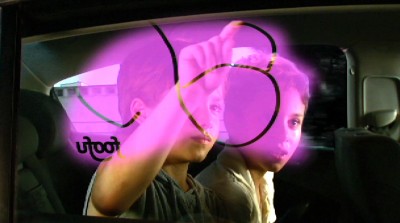 Backseat boredom could become a thing of the past if experimental interactive glass technology finds its way into General Motors cars.
Backseat boredom could become a thing of the past if experimental interactive glass technology finds its way into General Motors cars.
Currently in the prototype stage, a student project commissioned by GM envisages using smart glass technology to help rear seat passengers, particularly children, have a richer experience on the road.
Inspired by psychological studies that indicate car passengers often feel disconnected from their environment, GM asked students from the Bezalel Academy of Art and Design in Israel, to turn car windows into interactive displays. The students were given free reign to create applications, without concerns over whether they could be mass produced.
The range of games and apps created for this ‘Windows of Opportunity’ project included:
- Otto, an animated character projected over passing scenery that responds to real-time car performance, weather and landscape. With Otto, passengers can learn about their environment in fun, playful ways.
- Foofu, an app that allows passengers to create, explore and discover through finger drawing on window steam.
- Spindow, an app that provides its users a peek into other users’ windows around the globe in real time.
- Pond, an app that allows passengers to stream and share music with other cars on the road, downloads favorite tracks, and share messages with other passengers on the road.
 In order to demonstrate these apps, the Israeli students produced a full-scale functional prototype of a rear passenger seat and side window. They used motion and optical sensor technology developed by EyeClick to turn standard window glass into a multi-touch and gesture sensitive surface.
In order to demonstrate these apps, the Israeli students produced a full-scale functional prototype of a rear passenger seat and side window. They used motion and optical sensor technology developed by EyeClick to turn standard window glass into a multi-touch and gesture sensitive surface.
GM says that while there are no immediate plans to put this technology into production vehicles, this is “one of many projects underway at GM that could reinvent the passenger experience in years to come.” GM says that if these interactive windows did make it into production, they would be likely to use electronically charged “smart glass” technology, which is capable of variable states of translucence and transparency, and can reflect projected images.
Below is a video showing the car window technology at work:
[youtube http://www.youtube.com/watch?v=0dIia553wVU?rel=0&w=640&h=360]


